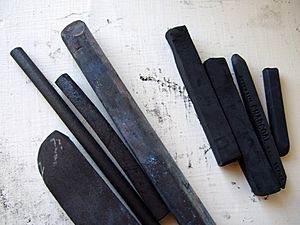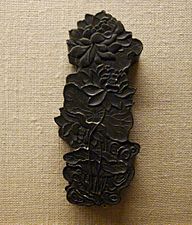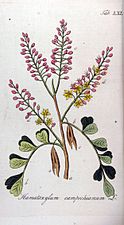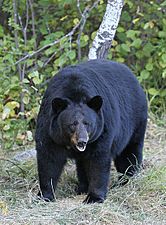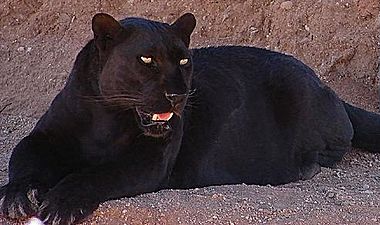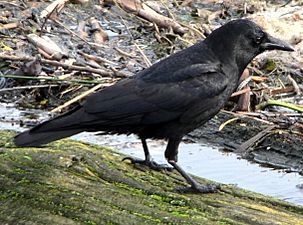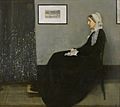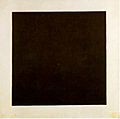Black facts for kids
| This box shows the color black. |
|---|
Black is a color that means the complete absence of light. When you see something black, it's because that object is absorbing all the light that hits it, instead of reflecting any back to your eyes. In art, however, black paint is often made by mixing many colors together. In the old language of heraldry (symbols on shields), black is called "sable."
Contents
What "Black" Means
The word "black" comes from an old English word, blæc, which meant "dark" or "ink." It's related to even older words that meant "burned." In many languages, the word for black is also the word for ink!
Science of Black
How Black Works (Physics)
Black is what happens when an object absorbs all the colors of light in the visible spectrum. Imagine light as a rainbow of colors. A black object soaks up all those colors, so none bounce back to your eyes.
Think of it this way:
- A black object doesn't reflect any visible light.
- Black pigments (like in paint) are made by mixing different colors together. When you mix enough primary colors, they absorb so much light that the result looks black.
So, black is both the absorption of all light and a mix of many colors of pigment.
A "black body" in physics is something that absorbs all light perfectly. But it's also the best at giving off heat. That's why black surfaces can get very hot in the sun, like a black car seat!
Scientists at Rensselaer Polytechnic Institute once made the darkest material ever. It reflected almost no light at all, only 0.045 percent! This super-dark material was made from tiny carbon nanotubes. Today, an even darker material called Vantablack holds the record. It absorbs an amazing 99.965% of light!
When light hits a black material, its energy usually turns into heat. This is why black surfaces are good at collecting heat, like in solar panels.
Black is the opposite of things that let light pass through (like clear glass), reflect light (like a mirror), or scatter light (like a white wall).
-
Vantablack is made of carbon nanotubes and is the blackest substance known. It absorbs almost all light!
Making Black (Chemistry)
Black Pigments
Early humans used black pigments for cave paintings. They often used charcoal, which is burnt wood.
Different groups of people used different plants to make their charcoal:
- The Inuit in Alaska used wood charcoal mixed with seal blood for painting.
- Polynesians burned coconuts to make their black pigment.
Here are some famous black pigments:
- Lamp black was used for painting, frescoes, and even tattoos. It was made by collecting the soot from burning oil lamps. An artist from the 1400s, Cennino Cennini, described how to make it: you'd put a clean pan over a lamp, and the smoke (soot) would collect on the bottom. This soot was very fine and ready to use.
- Ivory black was originally made by burning ivory (from elephant tusks) and mixing the charcoal with oil. Today, it's still made, but from regular animal bones instead of ivory.
- Mars black is a modern black pigment made from special iron oxides. It's often used in watercolors and oil paints. It's named after Mars, the Roman god of war, because iron is linked to him.
Black Dyes
Good black dyes were hard to make until the 1300s. Early dyes came from the bark, roots, or fruits of trees like walnut, chestnut, or oak. These often made colors that were more gray, brown, or bluish. To get a darker black, cloth had to be dyed many times. Sometimes, dyers added iron filings to make the color deeper. Another trick was to dye the fabric dark blue first, then dye it black.
A much richer black dye came from the Oak apple or gall-nut. These are small, round growths on oak trees, caused by tiny gall wasp larvae. This dye was very expensive because you needed many gall-nuts for a small amount of dye. From the 1300s, this dye was used for the clothes of kings and princes in Europe.
Another important natural black dye came from the logwood tree starting in the 1600s. This tree is native to southern Mexico and Central America. The country of Belize actually started as English logging camps for this tree!
Since the mid-1800s, most black dyes are made synthetically (man-made). One important synthetic black dye is Nigrosin, used for lacquers, varnishes, and marker-pen inks.
Black Inks
The first known inks were made in China around 2300 B.C. They used plant dyes and minerals like graphite mixed with water. Later, Chinese inks were made from soot (often from burning pine wood) mixed with animal glue. To use these "inksticks," you would grind them with a little water on an inkstone to make a liquid ink. Artists could change how thick or thin the ink was by how much they ground it.
India ink (or Indian ink) is a black ink widely used for writing, printing, and especially for drawing, like in comic books. The idea for it probably came from China. In India, where it was called masi, the black color came from bone char, tar, and other substances.
The Ancient Romans had a black writing ink called atramentum librarium. It was usually made from soot, similar to India ink. One type, atramentum elephantinum, was even made by burning elephant ivory!
Gall-nuts were also used to make fine black writing ink. Iron gall ink was a purple-black or brown-black ink made from iron salts and acids from gall-nuts. It was the main writing and drawing ink in Europe from about the 1100s to the 1800s.
Black in Space (Astronomy)
- A black dwarf is a theoretical star that has cooled down so much it no longer gives off heat or light. Scientists believe no black dwarfs exist yet because the universe isn't old enough for stars to cool down that much.
- A black hole is a place in space where gravity is so strong that nothing, not even light, can escape. It's called "black" because it absorbs all light that gets too close, just like a perfect black object. Black holes form when very massive stars collapse. They can grow by absorbing other stars or merging with other black holes. Supermassive black holes, millions of times bigger than our Sun, are thought to be at the center of most galaxies. Even though a black hole itself is black, material falling into it forms a bright spinning disk called an accretion disk, which is one of the brightest things in the universe!
- Black-body radiation is the energy given off by an object at a certain temperature, where all incoming light is turned into heat.
- The black sky refers to how space looks when you are outside Earth's atmosphere.
Why Space is Black – Olbers' Paradox
It might seem strange that outer space is black. If the universe is full of countless stars and is thought to be huge, shouldn't the light from all those stars make the whole universe bright all the time? This puzzle is called Olbers' paradox. It was first noticed in 1823 by a German astronomer named Heinrich Wilhelm Matthias Olbers.
The main reason space is black is that the universe is not infinitely old. It's about 13.8 billion years old. This means we can only see light from stars that are close enough for their light to have reached Earth in that time. Light from stars farther away simply hasn't gotten here yet! Also, the universe is expanding, and many stars are moving away from us. As they move away, their light stretches out and shifts towards red, or even becomes invisible to our eyes. Because of these reasons, there isn't enough starlight to make space bright.
On Earth, the daytime sky is blue because sunlight hits tiny molecules in our atmosphere. Blue light scatters more than other colors, making the sky look blue. This is called Rayleigh scattering.
The nighttime sky on Earth is black because that part of Earth is facing away from the Sun. The Earth itself blocks the Sun's light, and there isn't another bright light source nearby. So, there's not enough light to scatter and make the sky blue. On the Moon, there's no atmosphere, so the sky is black both day and night! The same is true for other places without an atmosphere.
Black in Nature (Biology)
-
The black mamba of Africa is one of the fastest and most venomous snakes. Its mouth is black inside.
-
A black panther is actually a leopard or jaguar with extra melanin (dark pigment) in its skin.
-
The American crow is known for being very intelligent.
Images for kids
-
Megaloceros cave art at Lascaux.
-
Modern-day monks of the Order of Saint Benedict in New Jersey.
-
Statue of Anubis, guardian of the underworld, from the tomb of Tutankhamun.
-
Red-figure pottery with a black background, showing Thetis (about 470–480 BC).
-
The Italian painter Duccio di Buoninsegna showed Christ expelling the Devil, who is covered with black hair (1308–11).
-
Portrait of a monk of the Benedictine Order (1484).
-
Gutenberg Bible (1451–1452). Black ink was used for printing because it was clear and easy to read.
-
Philip the Good in about 1450, by Rogier van der Weyden.
-
Charles V, Holy Roman Emperor (1500–1558), by Titian.
-
Portrait of Philip II of Spain (1527–1598).
-
Swiss theologian John Calvin believed in simple dress and churches.
-
Increase Mather, an American Puritan clergyman (1688).
-
Rembrandt, Self-portrait (1659).
-
Arrangement in Grey and Black Number 1 (1871) by James McNeill Whistler, also known as Whistler's Mother.
-
Berthe Morisot with a Bouquet of Violets, by Édouard Manet (1872).
-
Le Bal de l'Opera (1873) by Édouard Manet, showing how black was popular for evening wear in Paris.
-
The Theater Box (1874) by Pierre-Auguste Renoir, showing the shine of black fabric.
-
Wheat Field with Crows (1890), one of the last paintings by Vincent van Gogh.
-
The Black Square (1915) by Kazimir Malevich is considered the first purely abstract painting.
-
The goth fashion model Lady Amaranth. Goth fashion was inspired by Victorian mourning clothes.
-
The dowager Electress of Palatine in mourning (1717).
-
Emperor Pedro II of Brazil and his sisters wearing mourning clothes after their father's death (1834).
-
Queen Victoria wore black in mourning for her husband Prince Albert (1899).
-
The biblical Four Horsemen of the Apocalypse, including famine riding a black horse (painting by Viktor Vasnetsov, 1887).
-
Count Dracula as played by Bela Lugosi in the 1931 film.
-
The Supreme Court of the United States (2009).
-
Judges at the International Court of Justice.
-
A black and white police car of the Los Angeles Police Department.
-
A 1920 Ford Model T.
-
The first model BlackBerry (2000).
-
Heroes in American westerns, like the Lone Ranger, often wore a white hat, while villains wore black hats.
-
The Duke of Windsor was one of the first to wear midnight blue evening dress, which looked blacker than black in artificial light.
-
French singer Edith Piaf always wore black on stage.
-
American violinist Joshua Bell wears black on stage.
See also
 In Spanish: Negro (color) para niños
In Spanish: Negro (color) para niños



